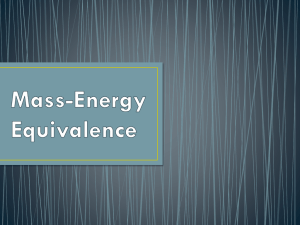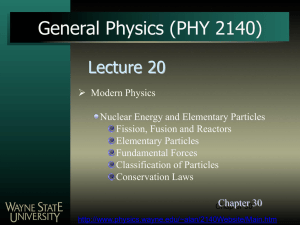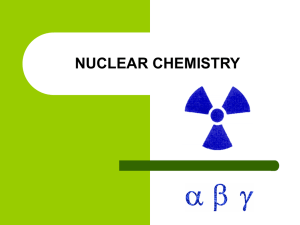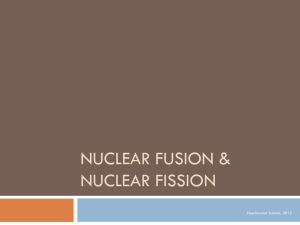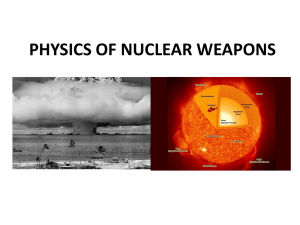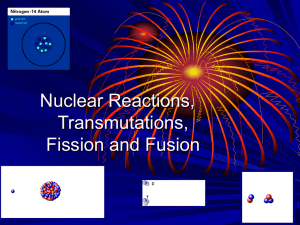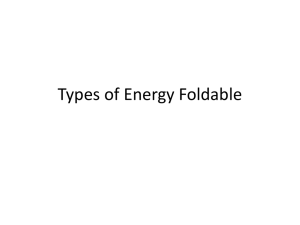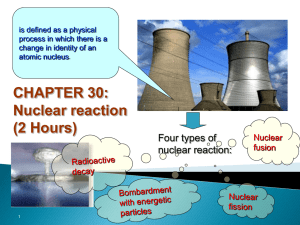Chapter 25.3 Fission and Fusion of Atomic Nuclei
advertisement
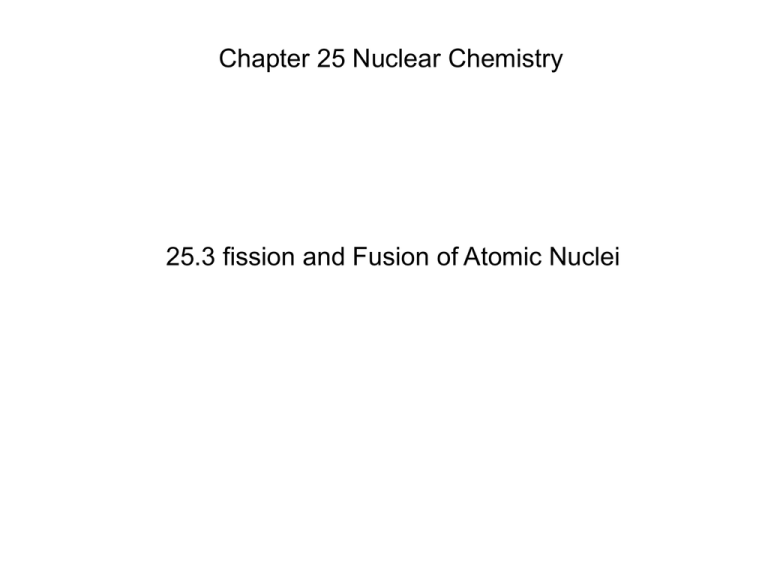
Chapter 25 Nuclear Chemistry 25.3 fission and Fusion of Atomic Nuclei Chemistry Today we are learning to:1. Describe what happens in a nuclear chain reaction 2. Explain the use of water in the storage of spent fuel rods 3. Distinguish fission reactions from fusion reactions Fission and Fusion of Atomic Nuclei Nuclear Fission When the nuclei of uranium-235 or plutonim-239 are bombarded with neutrons, they undergo fission, the splitting of a nucleus into smaller fragments. The steps are as follows: i. A slow moving neutron strikes a uranium-235 nucleus ii. The nucleus splits into two roughly equal halves iii. 3 more neutrons are released iv. These neutrons start a chain reaction with other uranium-235 nuclei Fission and Fusion of Atomic Nuclei Nuclear Fission Fission and Fusion of Atomic Nuclei Nuclear Fission Chain Reaction Video Fission and Fusion of Atomic Nuclei Nuclear Power Indian Point Energy Center is a three-unit nuclear power plant station located in Buchanan, New York just south of Peekskill NY. Half-Life Fission and Fusion of Atomic Nuclei Nuclear Power Neutron moderation is a process that slows down neutrons so the reactor fuel (uranium-235 or plutonium-239) captures them to continue the chain reaction. Water and graphite are good moderators Neutron absorption is a process that decreases the number of slowmoving neutrons. Control rods, made of a material such a cadmium, are used to absorb neutrons. Fission and Fusion of Atomic Nuclei Nuclear Waste • Why are spent fuel rods from a nuclear reaction stored in water? • They are highly radioactive and dangerous to the environment • Water keeps spent fuel rods cool • Water acts as a radiation shield, absorbing dangerous radiation Fission and Fusion of Atomic Nuclei Nuclear Fusion Fusion occurs when nuclei combine to produce a nucleus of greater mass. In solar fusion, hydrogen nuclei (protons) fuse to make helium nuclei and two positrons. Fusion reactions, in which small nuclei combine, release much more energy than fission reactions, in which large nuclei split. The sun has been supplying energy via nuclear fusion for about 4.567 billion years, and is about half way through its life cycle Fission and Fusion of Atomic Nuclei Nuclear Fusion •The use of controlled fusion as an energy source on Earth is appealing as the potential fuels are inexpensive and readily available. •The problems with fusion lie in achieving the high temperatures necessary to start the reaction (40,000,000,000 C) and in containing the reaction once it has started. 2.3 Vocabulary 25.3 Vocabulary • • • • Fission: the splitting of a nucleus into smaller fragments Neutron moderation: process of slowing down neutrons do they will be absorbed by nuclei. Neutron absorption: process of decreasing the number of slow moving neutrons by using control rods Fusion: when light nuclei fuse together to form a single nuclei END OF SHOW


